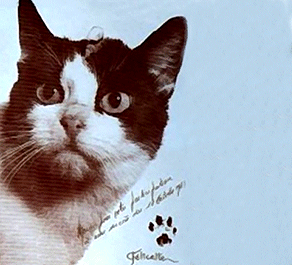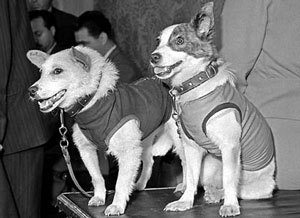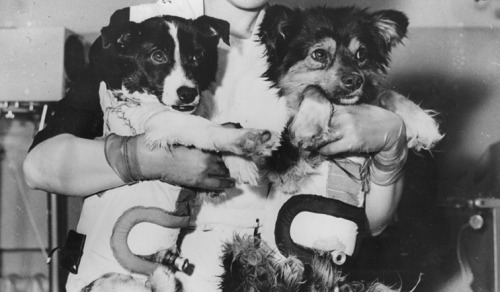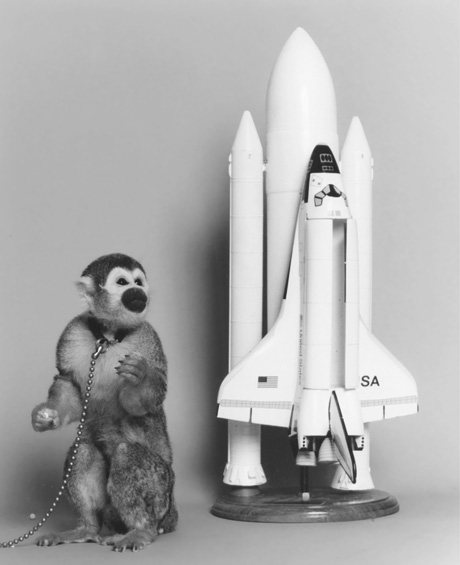DavidHDesma9
Saturday, June 13, 2015
Friday, June 12, 2015
Event 3: Making Strange: Gagawaka + Postmortem by Vivan Sundaram
Making Strange at the Fowler Museum showcased two beautiful works by Delhi-based contemporary artist Vivan Sundaram, Gagawaka and Postmortem. I have gone to the Fowler Museum quite a few times as an undergraduate, and have been pleasantly surprised each of my visits. I didn't know what to expect of this exhibit, and was definitely again highly satisfied with my visit.
Gagawaka is a series of 27 sculptural garments by Sundaram that utilize recycled and / or medical supplies to create a commentary on both high-fashion and haute couture. Here are a few of my favorite pieces from the Gagawaka collection.
This second piece is actually quite disgusting for me, as I get repulsed by the sight of hair in a bathtub drain. Something about this piece having that affect on me, and probably others, too is very interesting to me.
The last few works all used common medical supplies such as face masks, hair nets and medicinal silver foil pill containers as the material for the works. These works bring to mind the medtech chapters we discussed during the quarter. When I looked closely at the hairnet piece, I could see that some of them were soiled and had hair stuck to them. The fact that many of them were used and recycled added to the potency of the effect.


These last set of sculptural works are from his Postmortem collection which juxtapose old medical education props with various found materials to create these very intriguing small works. A lot of the subject matter here felt much darker than Gagawaka works, and it was aptly named Postmortem. The themes dealt with here were often with mortality and death in quite direct manner.
Overall I really enjoyed this exhibit. I have been dealing with a lot of death, illness and distrust in the medical industry lately, so a lot of the works here kind of resonated with certain feelings I have been encountering in my own life. I have never seen Vivan Sundaram's work before, but I hope to encounter more of it in the near future. He is truly a talented artist working in the realms of Science and Technology, particularly in the medical field that heavily utilizes both.
Gagawaka is a series of 27 sculptural garments by Sundaram that utilize recycled and / or medical supplies to create a commentary on both high-fashion and haute couture. Here are a few of my favorite pieces from the Gagawaka collection.
This first piece is quite interesting as Sundaram is using bra padding, something typically hidden from view, and places them on the outside of a garment as a revealed object. This subversion of a materials placement is quite a common yet still powerful technique among his works.
This second piece is actually quite disgusting for me, as I get repulsed by the sight of hair in a bathtub drain. Something about this piece having that affect on me, and probably others, too is very interesting to me.


The last two works used bandages and gauze and other protective material in a new way, creating works that resemble Trojan armor, creating another sense of protective covering out of an already protective material.
These last set of sculptural works are from his Postmortem collection which juxtapose old medical education props with various found materials to create these very intriguing small works. A lot of the subject matter here felt much darker than Gagawaka works, and it was aptly named Postmortem. The themes dealt with here were often with mortality and death in quite direct manner.
Overall I really enjoyed this exhibit. I have been dealing with a lot of death, illness and distrust in the medical industry lately, so a lot of the works here kind of resonated with certain feelings I have been encountering in my own life. I have never seen Vivan Sundaram's work before, but I hope to encounter more of it in the near future. He is truly a talented artist working in the realms of Science and Technology, particularly in the medical field that heavily utilizes both.
Event 2: Corey Helford Gallery: Circa
On May 2nd, I visited the CHG - Circa exhibit in Culver City. This was a group show, primarily of paintings, so though they didn't use "science" or technology so much actively in their medium. This was not a show necessarily about any particular topic, it was simply a curated gallery of up-and-coming artists so I was surprised to see how much science and technology was used in their subject matter.
I've lost the sheet of paper that stated each artists' name and title of piece so I will comment on the artworks' intersection with Science and Technology. This first piece had butterflies beautifully preserved and pinned up, much like one would see at a natural history museum. However, the artist contrasted these expectations with a beautiful ornately painted skull at the center of the piece. This piece is very related to many of the units we talked about in the course, and also touches upon many themes commonly found in the intersection of science and art, such as mortality, the controversy in using animals as and in art.
Another common theme was the use of robots in their works. Here are two paintings by different artists, both using robots as part of the subject matter. While these paintings feel like pop culture references more than scientific renderings of robots, the influence of robotics and engineering on these works is very clear.
This last piece is one of a series of paintings that resemble the slices of human anatomy we discussed in Unit 4 and 6 on medtech / biotech and art. The artists work seems highly influenced by biological and anatomical diagrams of the human body.
Overall I really enjoyed the exhibit and was delighted to see the depth of influence science and technology have had on even a very developed and traditional medium like painting.
 |
| PROOF: I couldn't fit the CHG logo and my face in the same selfie, sorry! |
Event 1: Provocations: The Architecture and Design of Heatherwick Studio
Event 1: Provocations: The Architecture and Design of Heatherwick Studio
 |
| One of the wonderful distractions at the Hammer before entering Provocations |
I caught Thomas Heatherwick's Provocations show on the very last hour of the very last day they had it open. We had arrived at the Hammer a few hours earlier specifically to see this show, but we were sidetracked by the other great things happening at the Hammer and had also forgotten their early closing time that evening.
 |
| A hairy building |
 |
| via: http://hammer.ucla.edu/fileadmin/_processed_/csm_791_01_HR_UKPavilion_CREDIT_IwanBaan_f1cc74ea13.jpg |
Upon entering Provocations, we took our time reading each placard and were very impressed by the layout and curation of the show. Each project is introduced as Heatherwick Studio's answer to a simple question. For example, the photo shown above is an answer to "How can a building represent a nation?". Other questions include "Can a plank be a piece of a furniture?" and "Can you make a park out of a desert?". Heatherwick Studio's solutions to each question always incorporates a conceptual twist that is both delightful and unexpected.
 |
| Heatherwick Studio's answer to "Can you squeeze a chair out of a machine, the way you squeeze toothpaste out of a tube?" |
 |
| An impressive feat of engineering / architecture / construction - an all glass bridge proof of concept |
My girlfriend, who is a designer at an architecture firm, brought to my attention how collaborative such a process must be to conceive of these works. For an architecture firm to design works like this, they must have a deep understanding of engineering and construction, both huge fields of themselves. For them to push these materials to the edge of what they can do (for example the all glass bridge with no internal metal supports), they must be masters of both form and design, as well as structural integrity.
 |
| A more concrete model of the all-glass bridge design. Very impressed by this project. |
In viewing this show with Desma 9 on my mind, I was very inspired by what a synergy of art, technology and science could mean in the realm of architecture. I always thought that architecture itself was already a manifestation of the three fields working together, but I now understand how much farther it can be explored through an active dialogue between the "art / design" heavy thinkers and the "engineering and technology" groups to ultimately create works that push expand the notion of what is possible by humankind.
 |
| PROOF |
Sunday, May 31, 2015
Unit 9: Space and Art
Animal Sacrifice in the 20th and 21st Century
 |
| Laika, the most famous animal Astronaut via: <https://timedotcom.files.wordpress.com/2014/11/laika.jpeg?quality=65&strip=color&w=1100> |
Space is infinitely vast, yes. Space has had an influence on art, media and design, yes. But what really intrigued me this week was not those facts or 'Powers of Ten' (I rewatched this for the Nanotech + Art unit, as I found it just as fitting there as well) but rather in learning how countless animals were used, often with no intent for their safe return, in the space industry to test the safety of their space exploration equipment. Professor Vesna highlighted one very important and well known astronautical pooch, Laika, and her story, and I was then inspired to look into some lesser known animals that also went to space to help progress mankind's understanding of space exploration technologies. [1]
Here are some notable animal space pioneers:
 |
| Dezik and Tsygan, the first living space travelers. via: <http://todocaninos.com/wp-content/uploads/2014/07/DezikyTsygan.jpg> |
 |
| Felicette sporting her brain electrode in this signed glamour shot; her autograph is unverified for authenticity. via: <http://sixtiescity.net/Space/Felicette.gif> |
 |
| This time they made custom space vests, so Belka and Strelka have a quite official looking photo via: <http://www.dogingtonpost.com/wp-content/uploads/2012/08/belkastrelka.jpg> |
 |
| These dogs had a proper space exploration; 22 whole days in orbit. <http://24.media.tumblr.com/tumblr_lj80frpCoZ1qiwh6to1_500.jpg?__SQUARESPACE_CACHEVERSION=1329920596441> |
 |
| Gordo here, optimistically staring far off into the distance <http://cabinetmagazine.org/issues/34/c12-3_FINAL.jpg> |
 |
| Testing Ham's safely equipment (they finally figured out those parachutes) via: <http://i.ytimg.com/vi/FyjDJIH4zXM/hqdefault.jpg> |
Not all of these animals died, but many more were killed than named here. After reading Ham's story, I realized some were never even named. But all of them suffered the unusual circumstances of going into space on experimental technology. Not by choice or for personal glory, as human astronauts have, but they were sent unknowingly as a sacrifice for mankind. Though most cultures of the world have stopped using animal sacrifices to appease the angry gods of ancient times, we still offer these animals for the glory of a new deity, technology.
References ::
[1] Vesna, Victoria, narr. “8 Space pt 3” N.p., . web. 5 Nov 2012.
[2] "Russian Space Dogs." Russian Space Dogs. Web. 31 May 2015.
[3] "First Monkey in Space." Universe Today. 31 Aug. 2009. Web. 31 May 2015.
[4] "Purr-n-Fur UK | Felicette the Space Cat, and the Mythical Felix." Purr-n-Fur UK | Felicette the Space Cat, and the Mythical Felix. Web. 31 May 2015.
[5] "Belka & Strelka: The First Dogs in Space - The Dogington Post." The Dogington Post. 25 Aug. 2014. Web. 3 June 2015.
[6] "Veterok and Ugolyok." Zoom Room Dog Training RSS. Web. 3 June 2015.
[7] Burgess, Colin, and Chris Dubbs. Animals in Space: From Research Rockets to the Space Shuttle. Print.
[8] Haraway, Donna. Primate Visions: Gender, Race, and Nature in the World of Modern Science (New York: Routledge, 1989).
Subscribe to:
Posts (Atom)


































